The world is home to a vast array of animal species, each adapted to thrive in different environments and habitats. Among these diverse creatures are some of the largest land animals on the planet. These magnificent beings hold a special place in our collective fascination, as their sheer size and strength captivate our imagination.
In this article, we will explore ten of the largest land animals, ranging from mighty mammals to fearsome reptiles, highlighting their unique characteristics and significance within their respective ecosystems.
While I could have included three different species of elephant, including the African elephant, African bush elephant, and the Asian elephant, I thought it best to include other animals instead.
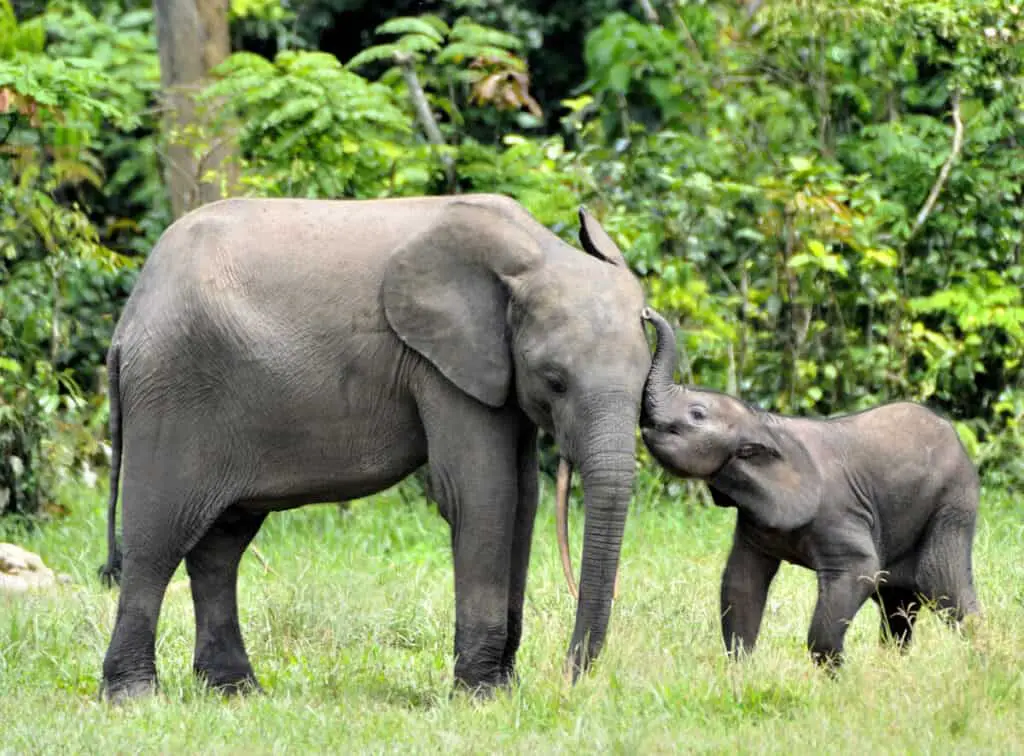
African Elephant
The African Elephant, known as the largest land animal, is native to various regions in Africa. These magnificent creatures are characterized by their long trunks and large tusks. They play a vital role in maintaining the balance of ecosystems and are considered keystone species.
However, African elephants face numerous challenges, primarily due to habitat loss and human activities. Conservation efforts have been implemented to protect and preserve African elephant populations. Organizations such as the World Wildlife Fund (WWF) work towards safeguarding their habitats through initiatives like anti-poaching patrols and community-based conservation projects. These efforts aim to mitigate human-wildlife conflict and promote sustainable practices that benefit both humans and elephants.
Despite these conservation efforts, African elephants continue to face habitat loss due to factors such as deforestation, urbanization, and agriculture expansion. The conversion of natural habitats into farmland disrupts their migratory routes and limits their access to food sources. This loss of habitat poses a significant threat to their survival as it increases competition for limited resources among elephant populations.
The African Elephant is a remarkable creature that holds great ecological importance as the largest land animal. Conservation efforts play a critical role in mitigating threats posed by habitat loss and other human activities. However, ongoing commitment is required from governments, organizations, and communities alike to ensure the long-term survival of this iconic species.
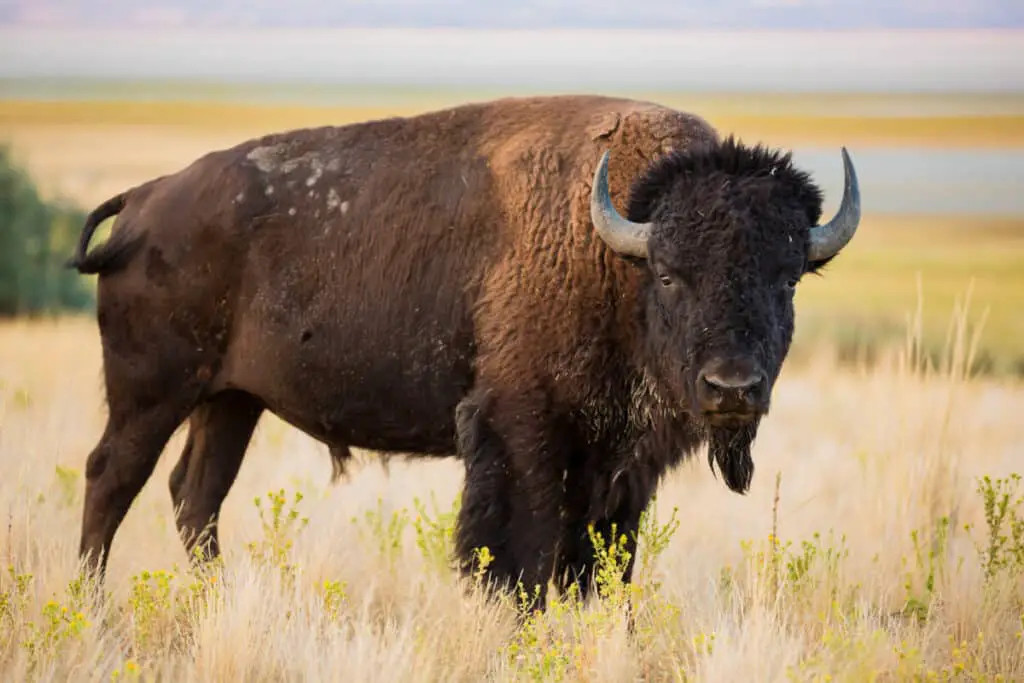
Bison
The bison, also known as the American bison or buffalo, is an iconic symbol of the North American plains and holds the distinction of being one of the largest land animals on the continent. Adult male bison can weigh up to a massive 1,000 kilograms (2,200 pounds) and reach lengths of around 3.8 meters (12.5 feet). These impressive creatures possess a sturdy build with a hump on their shoulders and a robust frame that exudes strength and power.
Bison have a distinctive appearance with a massive head and a thick coat of fur that helps them endure harsh climates. Their massive size and weight make them formidable creatures, and their ability to run at speeds of up to 56 kilometers per hour (35 miles per hour) showcases their agility and strength. Bison have strong, muscular bodies that allow them to graze on tough grasses and navigate through challenging terrain with relative ease.
Once found in vast numbers across the North American plains, bison played a significant role in shaping the landscape and the lives of indigenous peoples. Today, while their populations have significantly declined from historical levels, conservation efforts have been successful in preserving these magnificent animals. Bison continue to symbolize the wild and untamed spirit of the American West, reminding us of the grandeur and power of one of the largest land mammals on Earth.
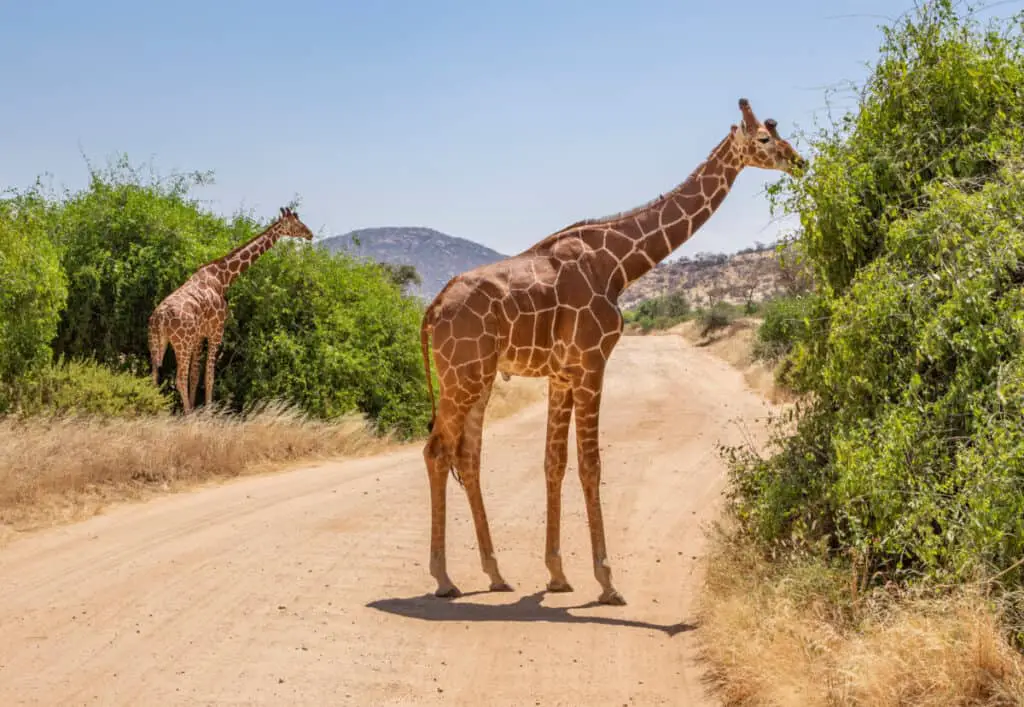
Giraffe
Giraffes possess an extraordinary adaptation in the form of their long necks, enabling them to reach foliage at heights unreachable by other herbivores. This unique feature allows them to access food sources that are unavailable to other animals, giving them a competitive advantage in their natural habitat.
The giraffe’s neck is composed of seven vertebrae, each measuring around 10 inches long. These vertebrae are connected with highly flexible joints and supported by powerful muscles, allowing the giraffe to extend its neck and browse on leaves up to 18 feet above the ground.
Apart from their remarkable physical adaptations, giraffes also face various conservation challenges. The International Union for Conservation of Nature (IUCN) lists giraffes as a species of ‘least concern,’ meaning they are not currently considered endangered. However, they are experiencing a significant decline in population due to habitat loss and fragmentation caused by human activities such as agriculture and urbanization. Additionally, illegal hunting for meat and trophies poses a threat to giraffe populations in some regions.
Conservation efforts for giraffes include the establishment of protected areas where these animals can thrive without disturbance from human activities. There is also ongoing research focused on understanding their behavior, ecology, and migration patterns to develop effective conservation strategies. Several organizations work towards raising awareness about the importance of preserving giraffe populations and implementing sustainable land-use practices that protect their habitats.
The long necks possessed by giraffes provide them with a unique advantage in accessing food sources at great heights. However, these magnificent creatures face conservation challenges due to habitat loss and hunting pressures. Efforts are being made to safeguard these iconic animals through protected areas and research initiatives aimed at better understanding their needs and promoting sustainable practices for coexistence with humans.
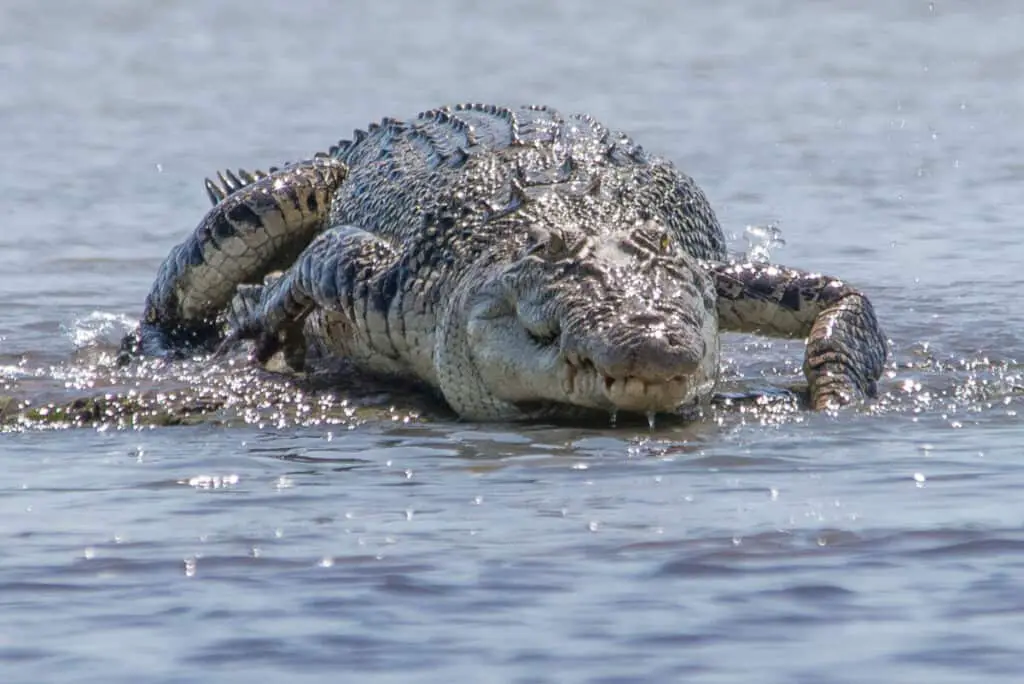
Saltwater Crocodile
Saltwater crocodiles possess a remarkable adaptation in the form of their powerful jaws, allowing them to exert tremendous force while capturing and subduing their prey.
These apex predators are known for their formidable size and strength, making them one of the largest reptiles on Earth.
In terms of size comparison with other crocodile species, saltwater crocodiles reign supreme. They can grow up to lengths of 17-23 feet (5-7 meters) and weigh as much as 2,000 pounds (900 kilograms). This makes them significantly larger than most other crocodile species, such as the Nile crocodile or the American alligator.
The habitat and feeding habits of saltwater crocodiles also contribute to their status as one of the largest land animals. They are primarily found in brackish and freshwater environments in Southeast Asia, northern Australia, and parts of India. These adaptable creatures can thrive in a range of habitats including rivers, estuaries, swamps, and coastal areas.
As carnivores, they have a diverse diet that includes fish, birds, mammals, reptiles, and even large herbivores like water buffalo. Saltwater crocodiles employ a sit-and-wait hunting strategy where they patiently lie in wait near water sources for unsuspecting prey to come within striking distance. When an opportunity presents itself, they use their powerful jaws to grab hold of their prey and drag it into the water where they drown it before consuming it whole or tearing it apart.
Overall, saltwater crocodiles demonstrate impressive physical characteristics that allow them to be formidable predators in their natural environment. Their large size compared to other crocodile species combined with their habitat flexibility and hunting prowess make them truly remarkable creatures within the animal kingdom.
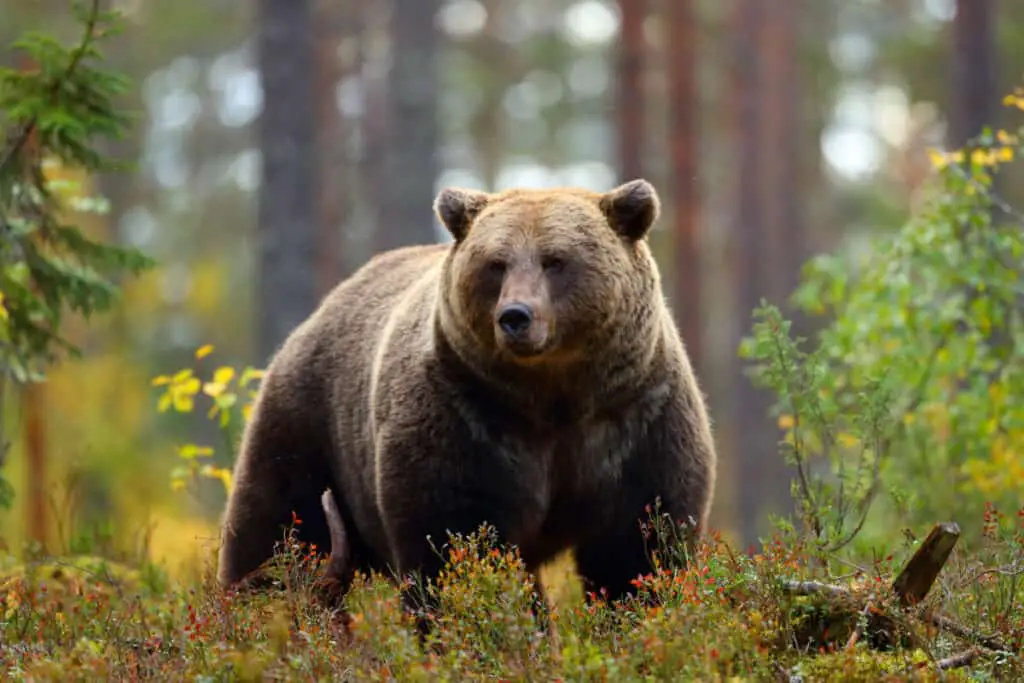
Brown Bear
The brown bear, also known as Ursus arctos, is a species of large mammal found in various regions across the Northern Hemisphere. It is one of the largest land animals and can be found in North America, Europe, and Asia.
The habitat of the brown bear varies depending on the region it inhabits. In North America, it can be found in forests, mountains, and tundra areas. In Europe and Asia, it can be found in forests and mountainous regions.
Brown bears have a varied diet that includes berries, nuts, roots, insects, fish, and small mammals. They are excellent swimmers and are known to catch fish by standing at waterfalls during salmon runs. Their behavior can vary depending on factors such as age and sex. Adult male brown bears tend to be solitary while females with cubs are more social.
Conservation efforts for the brown bear have been implemented due to their declining population numbers in some regions. The species is listed as vulnerable or endangered in certain areas due to habitat loss and hunting pressures. Habitat destruction caused by logging and urbanization has resulted in fragmentation of their populations.
The brown bear is a species of large mammal found across the Northern Hemisphere. Its habitat ranges from forests to mountains depending on its location. With its varied diet and impressive swimming abilities, this species plays an important role in its ecosystem. However, conservation efforts are necessary to protect this majestic creature from further decline due to human activities such as habitat destruction and hunting pressures.
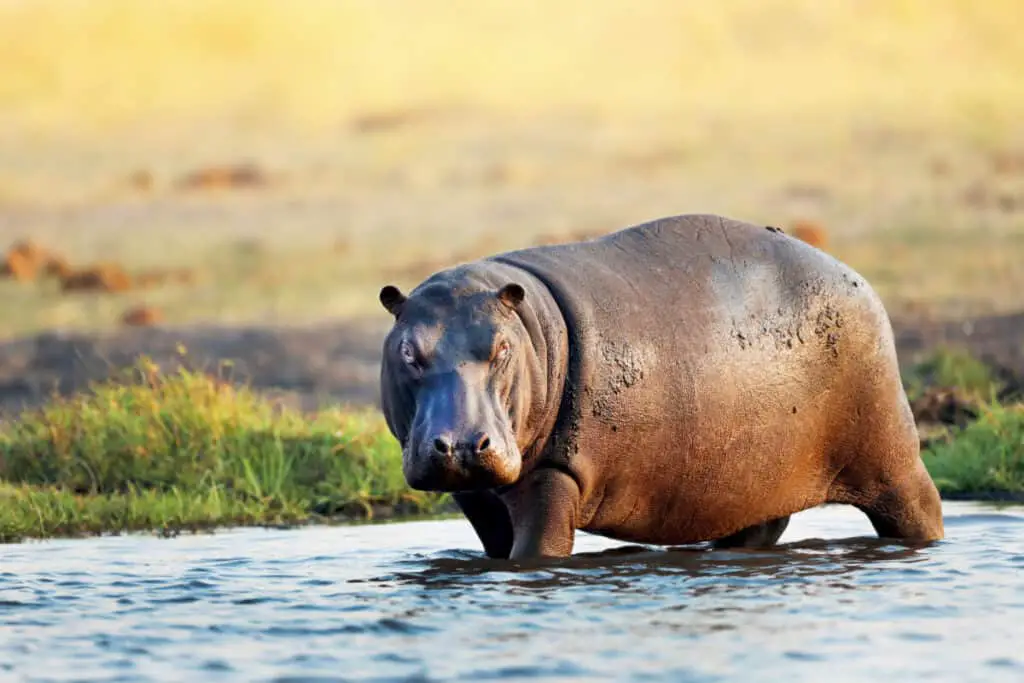
Hippopotamus
Hippopotamuses, or Hippopotamus amphibius, are semi-aquatic mammals that inhabit rivers and lakes in sub-Saharan Africa. These large animals have unique characteristics that allow them to thrive in their specific habitat.
Hippos spend a significant amount of time in water to keep cool and protect their sensitive skin from the sun. They have adapted to an aquatic lifestyle with webbed feet, which enable them to move swiftly through water despite their massive size.
In terms of behavior, hippos are known for being territorial and aggressive. They mark their territory by defecating in the water while spinning their tails, creating what is known as a ‘muck spread.’ This behavior not only serves as a territorial marker but also releases hormones that communicate dominance. Despite their seemingly docile appearance when lounging in the water, hippos can become extremely dangerous when threatened or disturbed. With powerful jaws and sharp teeth capable of crushing bones easily, they are responsible for more human deaths in Africa than any other large animal.
Conservation efforts for hippos face several challenges due to habitat loss and poaching activities. The destruction of wetlands and drainage of rivers for agriculture has resulted in the fragmentation of hippo populations across Africa. Additionally, illegal hunting for ivory teeth and meat poses a significant threat to these creatures’ survival.
To combat these issues, conservation organizations are working towards protecting hippo habitats by establishing protected areas and raising awareness about the importance of preserving this iconic species. By addressing both habitat preservation and anti-poaching measures, these efforts aim to ensure the long-term survival of hippopotamuses in their natural environment.
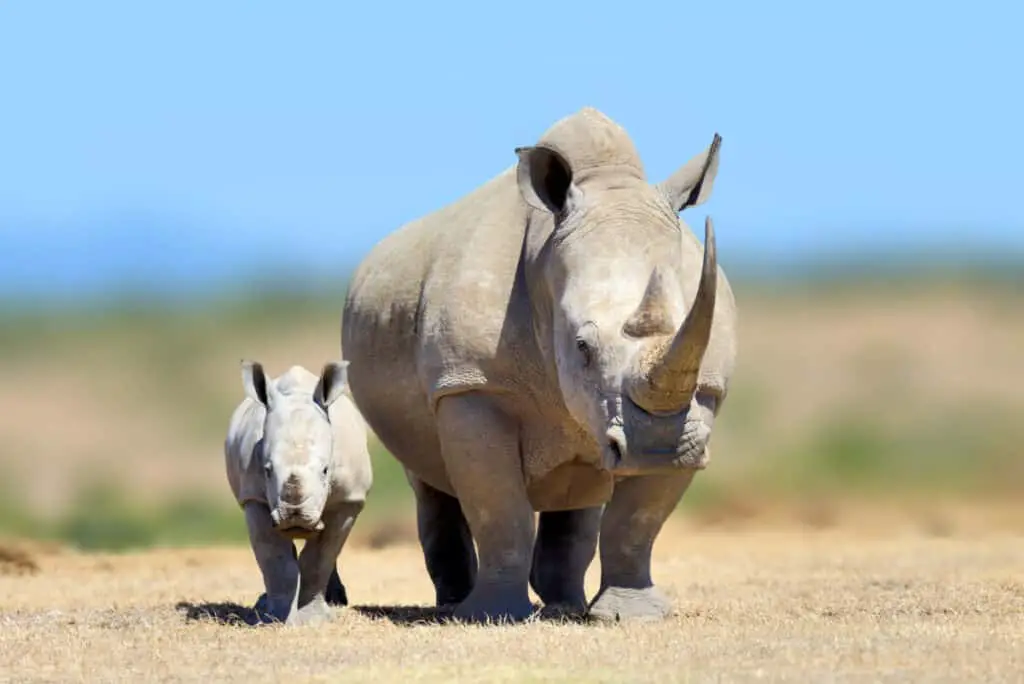
White Rhinoceros
The previous subtopic discussed the Hippopotamus, one of the largest land animals. Now, let us delve into the current subtopic: the White Rhinoceros.
The conservation efforts surrounding this majestic creature have become increasingly vital due to the ongoing poaching crisis.
Conservation efforts for White Rhinos are crucial as they face numerous threats, with poaching being a significant concern. These animals are hunted for their horns, which are highly sought after in illegal wildlife trade markets. Despite international bans on rhino horn trading, demand remains high in some parts of the world, leading to a continuous poaching crisis that poses a severe threat to their population.
To combat this issue, various organizations and governments have implemented strict anti-poaching measures and intensified law enforcement activities. Additionally, initiatives focusing on community engagement and education have been established to raise awareness about the importance of protecting these magnificent creatures.
In recent years, conservation efforts for White Rhinos have shown promising results but remain an ongoing battle. The involvement of local communities in protecting their habitats has proven essential in ensuring long-term survival for these animals. Conservationists also work towards establishing protected areas where rhinos can safely roam without fear of human interference or encroachment on their territory. Furthermore, breeding programs and translocation projects aim to increase genetic diversity and establish new populations in suitable habitats.
Conservation efforts for White Rhinos are critical due to the rampant poaching crisis they face. Through stringent anti-poaching measures and community engagement initiatives, progress has been made towards safeguarding these magnificent creatures’ future existence. However, continued dedication is necessary to ensure that these iconic giants continue to roam freely across their native landscapes for generations to come.
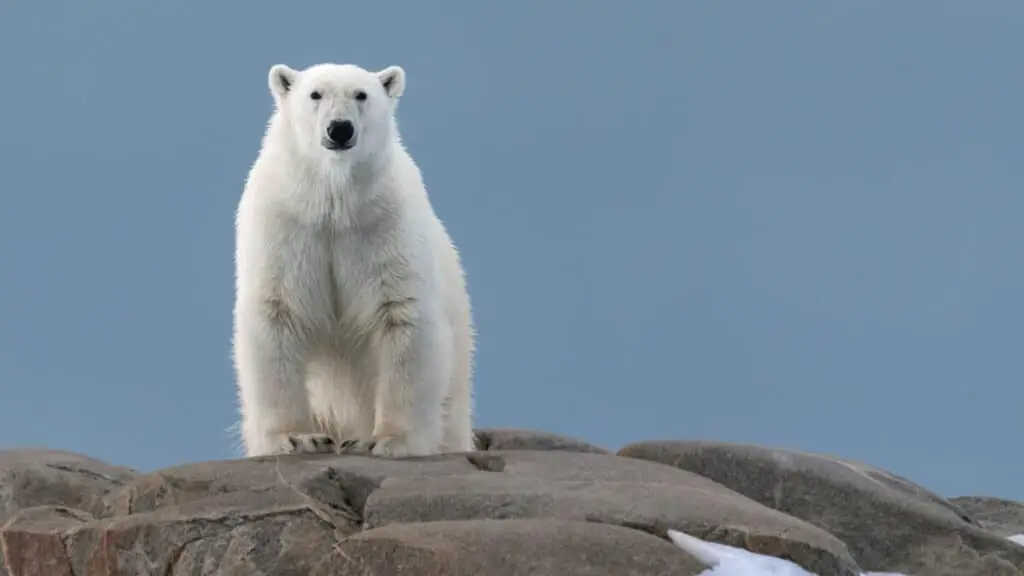
Polar Bear
Polar bears, known for their distinctive white fur and incredible adaptability to the harsh Arctic environment, are an iconic species deeply affected by climate change.
These largest land animals have evolved numerous behavioral adaptations that enable them to survive in their unique habitat.
One of their most remarkable adaptations is their ability to swim long distances in search of food. Polar bears can swim for several hours at a time, covering up to 60 miles without getting exhausted. This adaptation allows them to hunt seals on sea ice, which is a crucial part of their diet.
In terms of habitat and range, polar bears primarily inhabit the Arctic region, including areas such as Canada, Alaska, Greenland, and Russia. They rely on sea ice as a platform for hunting seals and finding mates.
However, with the increasing effects of global warming, the extent and duration of sea ice are decreasing rapidly. This reduction in sea ice poses significant challenges for polar bears’ survival as it limits their access to prey and disrupts their breeding patterns.
Polar bears exemplify extraordinary behavioral adaptations that enable them to thrive in the harsh Arctic environment. Unfortunately, they face numerous threats due to climate change and shrinking sea ice habitats.
It is crucial that conservation efforts continue to protect these majestic creatures and mitigate the impacts of climate change on their fragile ecosystems.
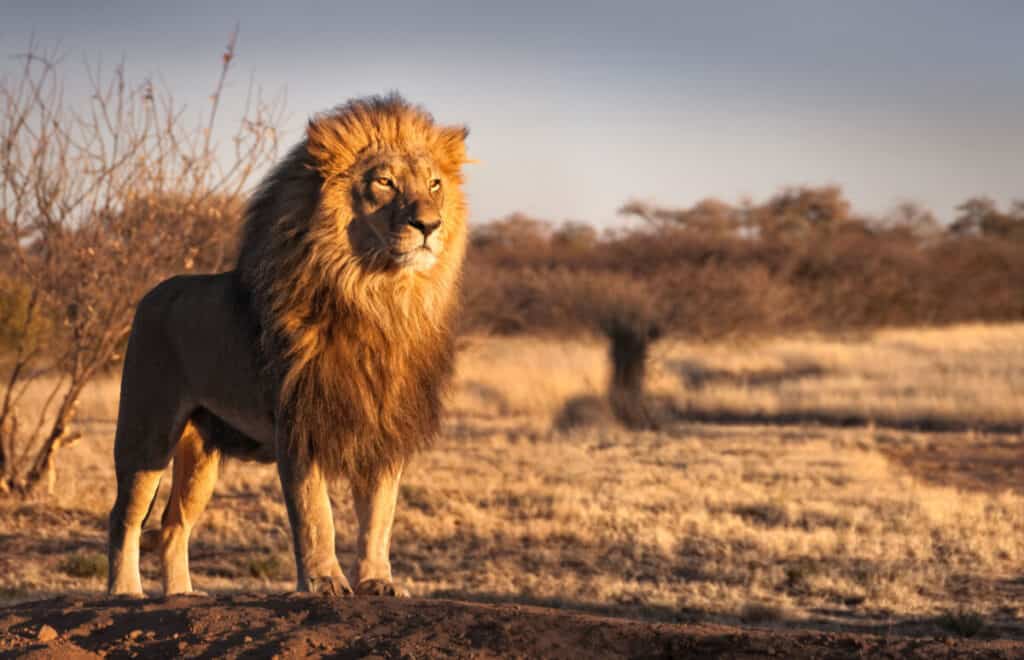
African Lion
African Lion, renowned for their majestic mane and powerful presence, possess a complex social structure that revolves around pride dynamics.
Lion conservation efforts have become increasingly important due to the decline in lion populations over the years. These efforts aim to protect and preserve these magnificent creatures and their natural habitats.
In terms of behavior and social structure, African lions are known to live in prides consisting of multiple females, cubs, and a few dominant males. The females within the pride typically remain together throughout their lives, while young males eventually leave the group when they reach maturity. This social structure allows for cooperative hunting strategies where multiple individuals work together to bring down large prey. Lions also display intricate communication patterns through vocalizations such as roars and growls.
Lion conservation efforts are crucial for maintaining healthy populations of these animals. Loss of habitat due to human activities such as deforestation and poaching poses significant threats to their survival. Additionally, conflicts with local communities can arise when lions come into contact with livestock or humans. To mitigate these challenges, various organizations have implemented initiatives focused on protecting lion populations by establishing protected areas and promoting sustainable land-use practices.
Overall, understanding lion behavior and social structure is essential not only for academic purposes but also for informing conservation strategies aimed at preserving this iconic species. By recognizing the importance of conserving African lions and implementing effective measures towards their protection, we can ensure that future generations will continue to marvel at the beauty and majesty of these largest land animals.
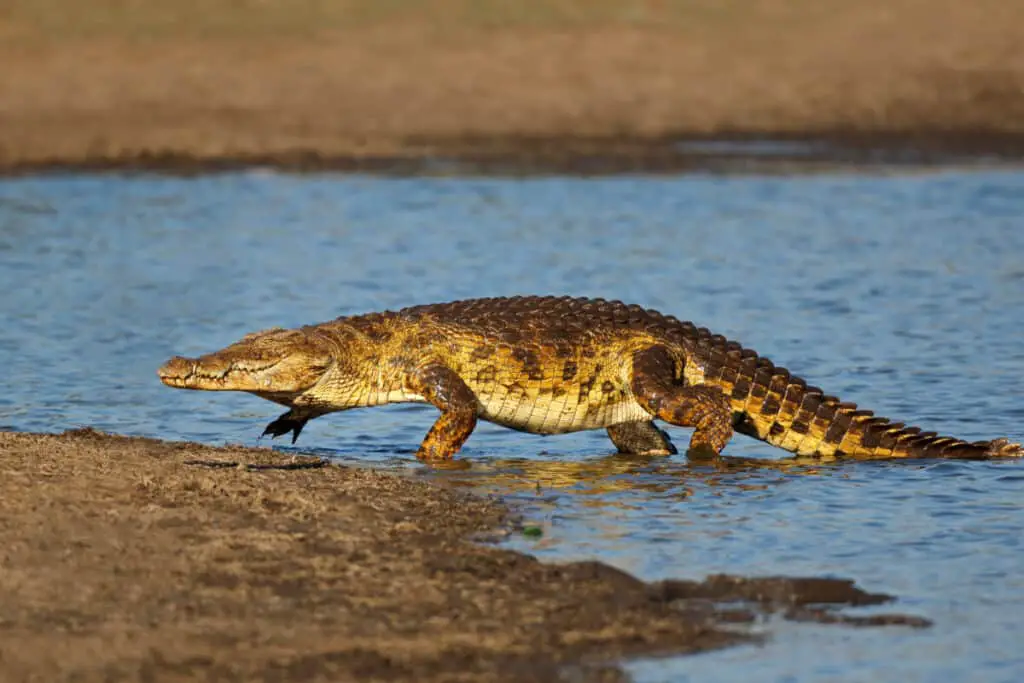
Nile Crocodile
Nile Crocodile, characterized by their formidable size and predatory nature, possess a fascinating behavior and ecological role within their freshwater habitats. These reptiles are one of the largest living crocodile species, with adult males reaching lengths of up to 6 meters. Their evolutionary traits enable them to be efficient hunters and apex predators in their ecosystems.
Nile crocodiles have long snouts filled with sharp teeth that allow them to grip and hold onto prey while using their tremendous strength to overpower it. They are ambush predators, lying in wait for unsuspecting animals that come near the water’s edge before launching a powerful attack.
In addition to being skilled hunters, Nile crocodiles also play a crucial role in maintaining ecosystem balance. They act as scavengers by consuming carcasses found in their habitat, preventing the spread of disease among other organisms. Moreover, they create basking spots along riverbanks through their burrowing behavior while constructing nests for egg-laying females. These nesting sites contribute to the formation of small islands that provide shelter for various aquatic species.
However, despite the ecological importance of Nile crocodiles, they often come into conflict with humans due to their proximity to populated areas. Encounters between humans and these large reptiles can result in attacks on livestock or even people themselves if precautions are not taken. This human-wildlife conflict poses challenges for conservationists who strive to protect both wildlife and human communities living near freshwater habitats inhabited by Nile crocodiles. It requires finding ways to minimize such conflicts through education, proper management strategies, and implementing measures that ensure the safety of both humans and these impressive creatures coexisting within shared environments.

